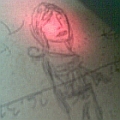el cid again
Posts: 16922
Joined: 10/10/2005
Status: offline

|
These documents affect USAAF and JNAF aircraft
Adding four kinds of B-24 and B-29 variants with smart bombs. [A few USN aircraft add smart bombs, but as alternates at extended range to carrying BAT at normal range, so no new types were added]. These carry three generations of Radio Controlled or Infra-Red guided bombs - limited here for anti-shipping use (although the R/C types were also used vs bridges, these are not possible targets in AE).
Changing the nature of G7M1 variants and (scenario 105 only) adding two more.
At long last, I have been able to sort out the three G7M1 designs - I did not even realize there were three! I had, in fact, detected elements from each design, and could not reconcile them!
I selected two to present in RHS.
For strictly historical scenarios, I selected the final Mitsubishi design, the one that was fully developed and ultimately rejected. This is a twin engine aircraft very similar to the He-177 in appearance, but smaller and using an 18 cylinder 2000 hp radial engine available in Japan. The long gestation of the design, and war experience, led to it being the most heavily armed for defense. The weight and drag of these weapons ultimately caused it to be rejection for production. At the same time, it had the least amount of offensive armament - an identical bomb/torpedo load as the Betty (although truly interior). Think of it as a faster, well armed, armored G4M with hardly any more range. Because it is the third design, I designate it G7M1c - although the c isn't official. There are three variants - bombs only (with AP or HE bombs), torpedo bomber (with AP at extended range and HE for non-naval targets - but not many - only large 250 kg bombs), and recon variant (with cameras, similar to the Nell G3M2 KAI).
For Japan enhanced scenarios, I selected the original Mitsubishi proposal for a four engine configuration. This was immediately rejected, partly because it was assumed (in 1941) that the G5N project would work out sooner. I worked it up with the same engine as was used by Mitsubishi for the second version of the Betty - except four of them - and honoring the original specification - which only demanded speed (313 knots) and range (about 4000 nautical miles). It remains primarily a naval attack bomber, but is large enough to permit a range/payload tradeoff unusual in Japanese bombers of the period: it can carry to extended range the normal load of a Betty, but it carries twice as much to normal range. It is able to lift a 21 inch torpedo with five times the standoff range as an 18 inch torpedo has - at normal range - or carry an 18 inch torpedo all the way to extended range. And for land targets, it adopts the standard of 16 bombs - although in this case smaller 100 kg (or 60 kg) bombs - not 250 kg like the later G8M uses. Being an early design, and not constrained by specification requirements, the defensive armament is very light (actually derived from the second design, since this one never got fleshed out). There are only 2 x 20 mm and 2 x 7.7 mm MG. By the time it enters service, in 1943, it will be obvious this is a mistake, so a later version appears in 105 with the 7.7 mm guns upgraded to 13 mm,
and also adding radar, which by then is available. It has virtually the range of a G8N1, but less than half the payload and not much defensive armament: the specification for speed and range being too literally honored. Even so, it carries twice the warload of the twin engine version.
The second design was a proposal which required development of a "Nu" engine - a pair of horizontal stroke engines each with 12 cylinders - 24 total - arranged back to back. This was not possible to develop for lack of machine tools when the invasion of the USSR prevented their import from Germany. It also might have been plagued by heat issues like the He-177 - with its dual engines of a different sort. It was a remarkably specialized aircraft built around delivering a single standoff weapon - a torpedo and it had early war ideas of minimal defensive armament - but at least had armor.
|
 Printable Version
Printable Version






 Dutch
Dutch




 New Messages
New Messages No New Messages
No New Messages Hot Topic w/ New Messages
Hot Topic w/ New Messages Hot Topic w/o New Messages
Hot Topic w/o New Messages Locked w/ New Messages
Locked w/ New Messages Locked w/o New Messages
Locked w/o New Messages Post New Thread
Post New Thread